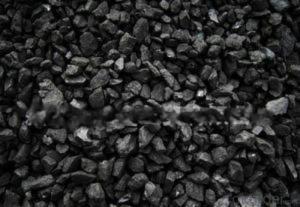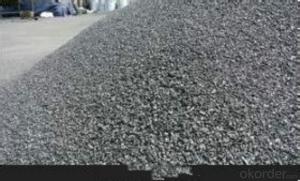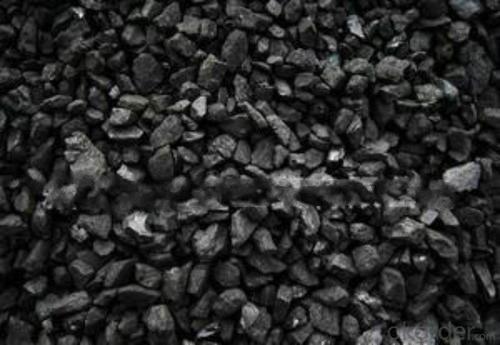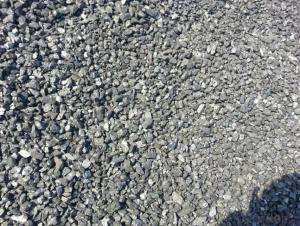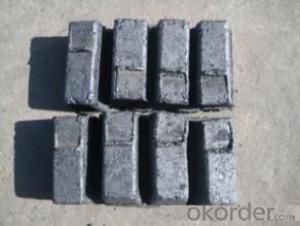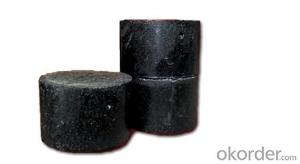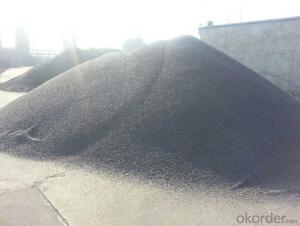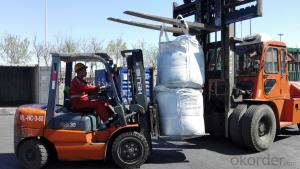S0.5% Recarburizer for mills with VM1.5%
- Loading Port:
- Tianjin
- Payment Terms:
- TT OR LC
- Min Order Qty:
- 21.3
- Supply Capability:
- 1013 m.t./month
OKorder Service Pledge
OKorder Financial Service
You Might Also Like
Introduction:
Calcined anthracite can be called carbon additive, carbon raiser, recarburizer, injection coke, charging coke, gas calcined anthracite.It is playing more and more important role in the industry
Best quality Anthracite as raw materials through high temperature calcined at over 2000℃ by the DC electric calciner with results in eliminating the moisture and volatile matter from Anthracite efficiently, improving the density and the electric conductivity and strengthening the mechanical strength and anti-oxidation. It has good characteristics with low ash, low resistivity, low sulphur, high carbon and high density. It is the best material for high quality carbon products. It is used as carbon additive in steel industry or fuel.
Features:
G-High Calcined Anthracite is produced when Anthracite is calcined under the temperature of 1240°C in vertical shaft furnaces. G-High Calcined Anthracite is mainly used in electric steel ovens, water filtering, rust removal in shipbuilding and production of carbon material. You are welcomed to visit out factory
Specifications:
F.C.% | 95MIN | 94MIN | 93MIN | 92MIN | 90MIN | 85MIN | 84MIN |
ASH % | 4MAX | 5MAX | 6 MAX | 6.5MAX | 8.5MAX | 12MAX | 13MAX |
V.M.% | 1 MAX | 1MAX | 1.0MAX | 1.5MAX | 1.5MAX | 3 MAX | 3 MAX |
SULFUR % | 0.3MAX | 0.3MAX | 0.3MAX | 0.35MAX | 0.35MAX | 0.5MAX | 0.5MAX |
MOISTURE % | 0.5MAX | 0.5MAX | 0.5MAX | 0.5MAX | 0.5MAX | 1MAX | 1MAX |
Pictures
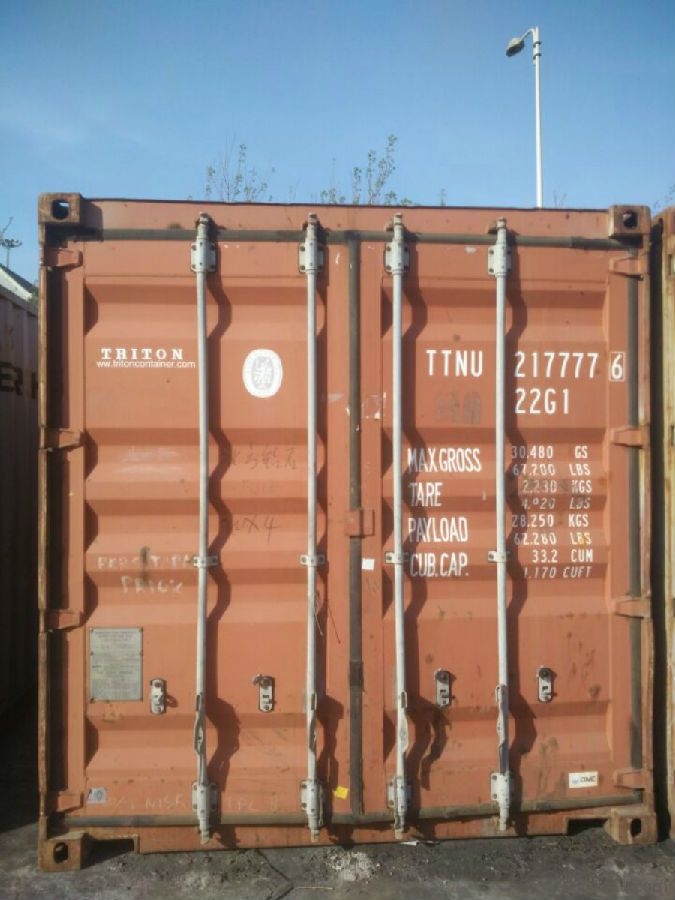
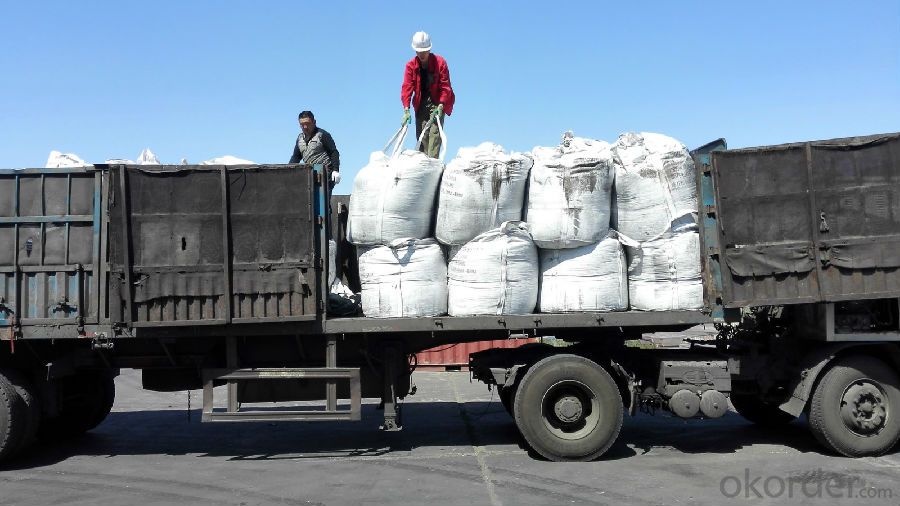
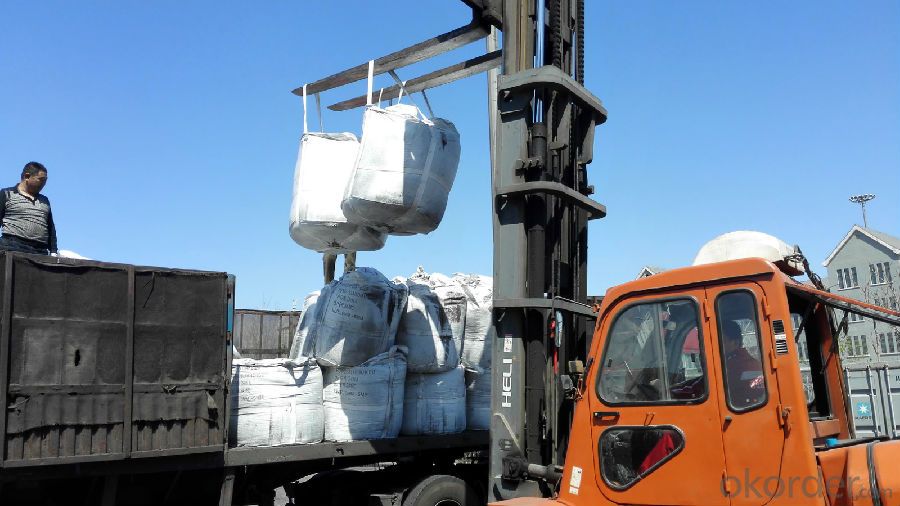
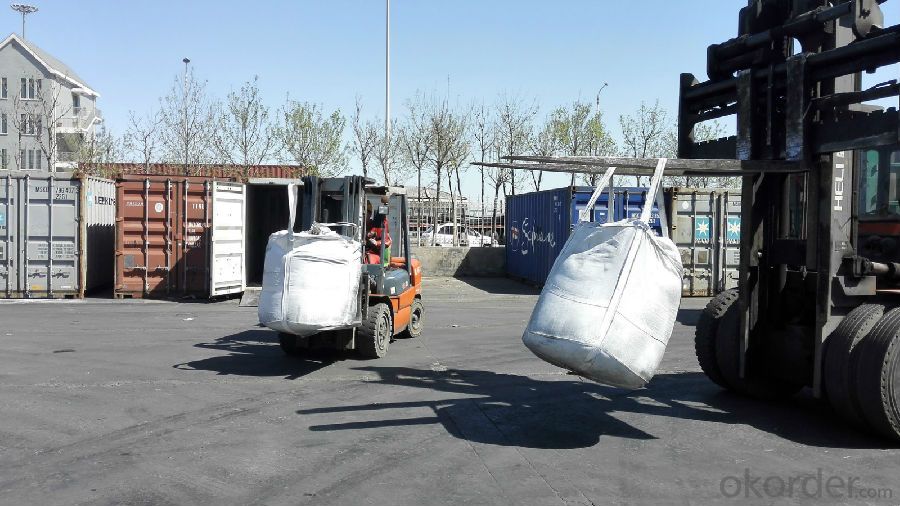
FAQ:
Packing:
(1). Waterproof jumbo bags: 800kgs~1100kgs/ bag according to different grain sizes;
(2). Waterproof PP woven bags / Paper bags: 5kg / 7.5kg / 12.5kg / 20kg / 25kg / 30kg / 50kg small bags;
(3). Small bags into jumbo bags: waterproof PP woven bags / paper bags in 800kg ~1100kg jumbo bags.
Payment terms
20% down payment and 80% against copy of B/L.
Workable LC at sight,
- Q: I heard that 85 of the furnace rock carbon harmony, and the result that I use advanced strengthening machine when I want to give high-grade furnace rock carbon, this how ah?
- Harmony has long been, ha, now can not bar high furnace rock carbon
- Q: What is the relationship between carbon and climate change?
- The carbon-climate relationship mainly relies on the role of carbon dioxide (CO2) as a greenhouse gas. CO2 naturally exists in the Earth's atmosphere and is indispensable for maintaining a livable climate by ensnaring heat from the sun and preventing its escape into space. Nevertheless, human activities, particularly the combustion of fossil fuels like coal, oil, and natural gas, have substantially raised the levels of CO2 in the atmosphere. The surplus CO2 functions as an added layer, capturing more heat and resulting in a phenomenon called the greenhouse effect. This surge in greenhouse gases, including CO2, methane, and nitrous oxide, is causing global temperatures to climb and consequently leading to climate change. The elevated temperatures disturb weather patterns, leading to more frequent and intense extreme weather events such as hurricanes, droughts, heatwaves, and heavy rainfall. Moreover, the excessive CO2 in the atmosphere is also being absorbed by the oceans worldwide, resulting in ocean acidification. This process modifies the chemical composition of seawater, which has adverse effects on marine life, coral reefs, and other ecosystems. It is crucial to reduce carbon emissions and transition to renewable energy sources to mitigate climate change. By diminishing the amount of CO2 released into the atmosphere, we can decelerate and potentially reverse the detrimental impacts of climate change. Additionally, efforts to preserve and restore forests, which act as carbon sinks by absorbing CO2, are also essential in addressing the carbon-climate relationship.
- Q: Benefits of reducing carbon emissions
- 2, slow down the greenhouse effect. 1) the increase of diseases and insect pests on the earth;2) sea-level rise;3) the climate is abnormal and the ocean storm is increasing;4) the land was dry and the desertification area increased.Scientists predict that if the earth's surface temperature at the present rate of progress, by 2050 the global temperature will rise 2 to 4 degrees Celsius, the polar ice will melt significantly, resulting in a significant rise in sea level, some island countries and coastal city will be submerged in the water, which consisted of several famous international City: New York Shanghai, Tokyo and Sydney.The greenhouse effect can threaten prehistoric human beings with deadly virusesU.S. scientists recently warned that due to rising global temperatures to the Arctic ice melt, frozen hundreds of thousands of years of prehistoric deadly virus may lead to a global epidemic delivered from oppression, panic, human lives are threatened.Syracuse University of New York scientists in the latest issue of "scientists" magazine pointed out earlier, they found a plant virus TOMV, the virus spread widely in the atmosphere that has its traces in the Arctic ice.
- Q: What materials can be carbonitriding?
- Low temperature carbonitriding for high alloy tool steel, high-speed steel tools, etc., in temperature carbonitriding is under great pressure not only in carbon steel wear parts, high temperature carbonitriding is mainly used for medium carbon steel and alloy steel under great pressure.
- Q: What is carbon coffee fiber?
- The carbon coffee fiber uses the coffee residue left after the coffee and is made into crystal by calcining, then ground into nanometer powder and added to the polyester fiber to produce a functional polyester staple, a coffee carbon fiber. Its main functions are bacteriostasis, deodorization, divergence of negative ions and anti ultraviolet rays.
- Q: How do you distinguish between alkaline and ordinary carbon cells?
- In addition, the alkaline cell logo has a unique "ALKALINE" content.Alkaline batteries weigh weight of the same type of battery, to return a lot of alkaline batteries than ordinary batteries. For example, the weight of alkaline cell 5 is about 24 grams, and the average dry battery weight of size 5 is about 18 grams.
- Q: How does carbon impact the stability of tundra ecosystems?
- The stability of tundra ecosystems is impacted by carbon in several ways. To begin with, carbon is essential for the formation and development of tundra soils. When plants in the tundra grow and undergo photosynthesis, they absorb carbon dioxide from the atmosphere and convert it into organic matter. This organic matter eventually decomposes, adding carbon to the soil and creating a layer of permafrost rich in organic material. This layer of permafrost helps to stabilize the ecosystem. Furthermore, carbon in the form of vegetation acts as a protective layer against erosion in tundra ecosystems. The dense cover of mosses, lichens, and shrubs holds the soil in place, preventing it from being washed away by wind or water. This stabilization is crucial in the tundra, where plant growth and soil development are limited by cold temperatures and short growing seasons. Moreover, the stability of tundra ecosystems is influenced by the release of greenhouse gases, such as carbon dioxide and methane, from the melting permafrost. As global temperatures rise, the permafrost thaws and releases stored carbon into the atmosphere. This process creates a feedback loop, as the released carbon contributes to further warming, which accelerates permafrost thawing. This feedback loop has the potential to disrupt tundra ecosystems by altering the balance of plant and animal life, disrupting nutrient cycling, and increasing the risk of wildfires. In conclusion, carbon plays a vital role in maintaining the stability of tundra ecosystems by contributing to soil formation, preventing erosion, and regulating greenhouse gas emissions. It is crucial to understand and manage carbon dynamics in the tundra in order to preserve these unique and delicate ecosystems in the face of climate change.
- Q: Can carbon in barbecue cause cancer? Can carbonated food cause cancer?
- Eat barbecue are carcinogenic, because the meat directly on the heat under the grill, the decomposition of fat droplets in the charcoal, and then with the meat proteins, it will produce a carcinogen called benzopyrene. Experts explained that if people regularly eat food contaminated by benzopyrene, carcinogens can accumulate in the body and cause stomach cancer and bowel cancer.
- Q: What are the effects of carbon emissions on the stability of desertification?
- Carbon emissions contribute to the stability of desertification by exacerbating its effects. Increased atmospheric carbon dioxide levels lead to global warming, which in turn intensifies droughts and reduces precipitation in arid regions. This prolonged dryness accelerates soil degradation, reduces vegetation cover, and undermines the ability of arid ecosystems to sustain life. Therefore, carbon emissions play a significant role in destabilizing desertification processes and further threatening the stability of arid landscapes.
- Q: What are the different types of carbon-based air pollutants?
- Air pollution is caused by various types of carbon-based pollutants. Some examples include: 1. Carbon Monoxide (CO): This gas is produced when fossil fuels like gasoline, coal, and wood are incompletely burned. It is highly toxic and can be harmful to human health, especially when inhaled in large amounts. 2. Carbon Dioxide (CO2): This is a greenhouse gas that occurs naturally in the Earth's atmosphere. However, human activities like burning fossil fuels and deforestation have significantly increased its levels, leading to climate change and global warming. 3. Volatile Organic Compounds (VOCs): These are organic chemicals that easily evaporate at room temperature. They are released into the air by various sources such as paints, solvents, gasoline, and industrial processes. VOCs contribute to the formation of ground-level ozone, which is a major component of smog and can harm human health. 4. Methane (CH4): Another greenhouse gas, methane is primarily produced by the decomposition of organic materials in landfills and the extraction and transportation of natural gas. Methane has a much higher warming potential than carbon dioxide. 5. Polycyclic Aromatic Hydrocarbons (PAHs): These chemicals are formed when organic materials like coal, oil, and gas are incompletely burned. PAHs are released into the air through vehicle exhaust, industrial processes, and the burning of fossil fuels. They are known to be cancer-causing and have adverse effects on human health. 6. Formaldehyde (HCHO): This colorless gas is used in the production of resins, plastics, and certain building materials and household products. It is released into the air through fuel combustion, cigarette smoke, and the release of certain products. Formaldehyde is a respiratory irritant and can cause allergic reactions and other health problems. These are just a few examples of carbon-based pollutants that contribute to air pollution. It is crucial to reduce emissions of these pollutants by adopting cleaner technologies, energy-efficient practices, and promoting the use of renewable energy sources. This will help minimize their negative impacts on human health and the environment.
Send your message to us
S0.5% Recarburizer for mills with VM1.5%
- Loading Port:
- Tianjin
- Payment Terms:
- TT OR LC
- Min Order Qty:
- 21.3
- Supply Capability:
- 1013 m.t./month
OKorder Service Pledge
OKorder Financial Service
Similar products
Hot products
Hot Searches
